Intelligent Recognition Method of Decorative Openwork Windows with Sustainable Application for Suzhou Traditional Private Gardens in China
Abstract
:1. Introduction
2. Establishment of DO-W Image Database
2.1. Experiment Scenes
2.2. Image Sample Labels
3. Deep Learning Neural Network for DO-W Recognition
3.1. Data Pre-Processing and Enhancement
- (1)
- Random clipping: Randomly crop a rectangular region whose aspect ratio is randomly sampled at [3/4; 4/3] and whose area is randomly sampled at [8%, 100%] and then resize the cropped region into a 448-by-448 square image.
- (2)
- Random rotation: Rotate part of the image randomly by 30°, 60° and 90° with a probability of 0.3 to simulate the view difference of the real landscape scene to improve the deformation adaptability.
- (3)
- HSV brightening: Randomly vary the saturation of the images to (50% to 150%) of the original image and vary the brightness to (30% to 170%) of the original image in the HSV color space of the image, keeping the hue and contrast constant, to increase the light intensity variation and enhance the adaptability of the image.
- (4)
- Gaussian blur: Add salt and pepper noise and Gaussian noise to the image and simulate shooting samples with different levels of sharpness to reduce image noise infection and the level of detail.
- (5)
- Mix-up: Apply the effective way to obtain new training samples which make use of linear overlay between any two images and their corresponding labels. This is conducted as follows:where and are the original input images, and are the corresponding labels of the images and is a random number from the beta (α, α) distribution with the value range of . The above enhanced steps can obtain the generalization of the network architecture and the improvement in the robustness capability of the model, and all the images are randomly assigned to the network training after the above pre-processing.
3.2. Proposed Method
3.2.1. Backbone Network
3.2.2. Soft-VLAD Module
3.2.3. Probability Classifier
3.3. Training Parameter Settings
4. Result and Discussion
4.1. Datasets and Setup
4.2. Experiment Results
4.3. The Sustainable Application of DO-W Recognition
4.3.1. DO-W Recognition in the Canglang Pavilion Relying on the CSV-Net
4.3.2. DO-W Recognition in the Humble Administrator’s Garden
5. Conclusions
Author Contributions
Funding
Institutional Review Board Statement
Informed Consent Statement
Data Availability Statement
Conflicts of Interest
References
- UNESCO. Convention concerning the protection of the world cultural and natural heritage. In Proceedings of the World Heritage Committee Twenty-First Session, Naples, Italy, 1–6 December 1997; p. 41. [Google Scholar]
- Cao, L.D. Illustrated Suzhou Gardening·Flower Window; Huangshan Publishing Press: Anhui, China, 2010. [Google Scholar]
- Onishi, S. Study in the Suzhou Classic Garden Decoration Symbol Mark; Soochow University: Suzhou, China, 2005. [Google Scholar]
- Xu, Y. Theory Landscape Architecture Skit the Flower Window Design Culture. Appl. Mech. Mater. 2012, 226, 2418–2421. [Google Scholar] [CrossRef]
- Ding, S. Culture reflections embodied in modern architecture: An analysis symbolic meanings of classical Chinese garden design elements and principles. Am. Soc. Eng. Educ. 2012, 25–373. [Google Scholar]
- Du, C.L.; Wang, X.T. Painting in poem can be seen through windows in garden-aesthetics research of windows in chinese classical garden. Chin. Landsc. Archit. 2018, 34, 131–135. [Google Scholar]
- Zhu, J.N. Making images for full expressing meaning, painting for full expressing emotion-on the cultural meaning and creative methods of artistic conception theory. Chin. Landsc. Archit. 2016, 32, 86–91. [Google Scholar]
- Wang, Z.Z.; Geng, T. Research on the application of decorative openwork window symbol in modern interior design. Art Lit. Masses 2018, 19, 75–76. [Google Scholar]
- Wan, J. The application of flower window art in Suzhou gardens in jewelry design. Artist. Sea 2015, 179–180. [Google Scholar]
- Liu, Q.; Wang, J. Celadon design based on Suzhou Garden building decoration pattern. Idea Des. 2019, 77–80. [Google Scholar]
- Fu, C.L. Research on the Plastic Art of the Decorative Openwork Window in Suzhou Gardens; Shandong University: Jinan, China, 2011. [Google Scholar]
- Guo, J.W. Patterns of flower window in Suzhou Classical Gardens and Auspicious Culture. Art Lit. Masses 2014, 117. [Google Scholar]
- Mi, T.Y.; Jiang, H. On the rationality of design scale of flower windows in classical gardens under the change of light and shadow. Beauty Times 2016, 72–73. [Google Scholar]
- Meng, R. See and be seen—The fun of landscaping in Suzhou Gardens. Art Educ. Res. 2013, 163–164. [Google Scholar]
- Wu, Q.T. Application of ornamental perforated windows of historic garden in modern landscape design. Art Des. 2012, 139–140. [Google Scholar]
- Ma, L. On the art of flower windows in gardens and the application of design elements of flower windows in graphic design. Art Educ. Res. 2018, 53–54. [Google Scholar]
- Sha, X.M. Value analysis of out the window in modern environment art design. Anhui Archit. 2011, 18, 8–9. [Google Scholar]
- Zhao, Q.; Zhang, Y.Y. Research on the development strategy of the derivative products of the flower window art in traditional garden. Beauty Times 2017, 102–103. [Google Scholar]
- Zheng, Y.Y.; Kong, J.L.; Jin, X.B.; Wang, X.Y.; Su, T.L.; Zuo, M. Crop Deep: The crop vision dataset for deep-learning-based classification and detection in precision agriculture. Sensors 2019, 19, 1058. [Google Scholar] [CrossRef] [Green Version]
- Jin, X.B.; Zheng, W.Z.; Kong, J.L.; Wang, X.Y.; Bai, Y.T.; Su, T.L.; Lin, S. Deep-learning forecasting method for electric power load via attention-based encoder-decoder with bayesian optimization. Energies 2021, 14, 1596. [Google Scholar] [CrossRef]
- Kong, J.; Wang, H.; Wang, X.; Jin, X.; Fang, X.; Lin, S. Multi-stream hybrid architecture based on cross-level fusion strategy for fine-grained crop species recognition in precision agriculture. Comput. Electron. Agric. 2021, 185, 106134. [Google Scholar] [CrossRef]
- Zheng, Y.; Yang, J.Y. Research on elaborate urban repair planning approach based on AI analysis of large-scaie street-view Big Data. Chin. Landsc. Archit. 2020, 36, 73–77. [Google Scholar]
- Wei, W.X.; Wang, N. The application status and prospect of Artificial Intelligence in the management of smart scenic spots. J. Hebei Youth Adm. Cadres Coll. 2019, 31, 54–59. [Google Scholar]
- Zhao, J.; Cao, Y. Review of Artificial Intelligence methods in landscape architecture. Chin. Landsc. Archit. 2020, 36, 82–87. [Google Scholar]
- Li, R. Application of Computer technology in the design of landscaping. Theor. Res. Urban Constr. 2021. [Google Scholar]
- Kuo, C.J.; Borgers, A.; Timmerinans, H. Spatial Analysis of Chinese Garden Designs with Machine Learning; CAADRIA: Bangkok, Thailand, 2003. [Google Scholar]
- Zheng, Y.Y.; Kong, J.L.; Jin, X.B.; Wang, X.Y.; Su, T.L.; Wang, J.L. Probability fusion decision framework of multiple deep neural networks for fine-grained visual classification. IEEE Access 2019, 7, 122740–122757. [Google Scholar] [CrossRef]
- Hang, J. Three cold-weather friends—The origin of the symposium on traditional Chinese graphics and modern visual design. Art Obs. 2005, 29. [Google Scholar]
- Tuo, Y. The affinity characteristics of traditional Chinese auspicious symbols and the correspondence of modern interior design. J. Inn. Mong. Norm. Univ. 2007, 621–624. [Google Scholar]
- Huang, C.; Zhu, L.C. Research on the application of patterns of flower window in Suzhou Gardens. Art Lit. Masses 2017, 52. [Google Scholar]
- Wang, C.Y.; Liao, H.Y.M.; Wu, Y.H.; Chen, P.Y.; Hsieh, J.W.; Yeh, I.H. CSPNet: A New Backbone That Can Enhance Learning Capability of CNN. In Proceedings of the IEEE/CVF Conference on Computer Vision and Pattern Recognition (CVPR), Seattle, DC, USA, 16–18 June 2020; pp. 390–391. [Google Scholar]
- He, K.; Zhang, X.; Ren, S.; Sun, J. Deep Residual Learning for Image Recognition. In Proceedings of the IEEE Conference on Computer Vision and Pattern Recognition (CVPR), Las Vegas, NV, USA, 27–30 June 2016; pp. 770–778. [Google Scholar]
- Szegedy, C.; Ioffe, S.; Vanhoucke, V.; Alemi, A.A. Inception-v4, Inception-ResNet and the Impact of Residual Connections on Learning. In Proceedings of the Thirty-First AAAI Conference on Artificial Intelligence, San Francisco, CA, USA, 4–9 February 2017. [Google Scholar]
- Zhou, W.-Q. History of Chinese Classical Gardens, 3rd ed.; Tsinghua University Press: Beijing, China, 2008; p. 11. [Google Scholar]
- Liu, T.-C. Chinese Classical Gardens of Suzhou; China Architecture &Building Press: Beijing, China, 1979. [Google Scholar]
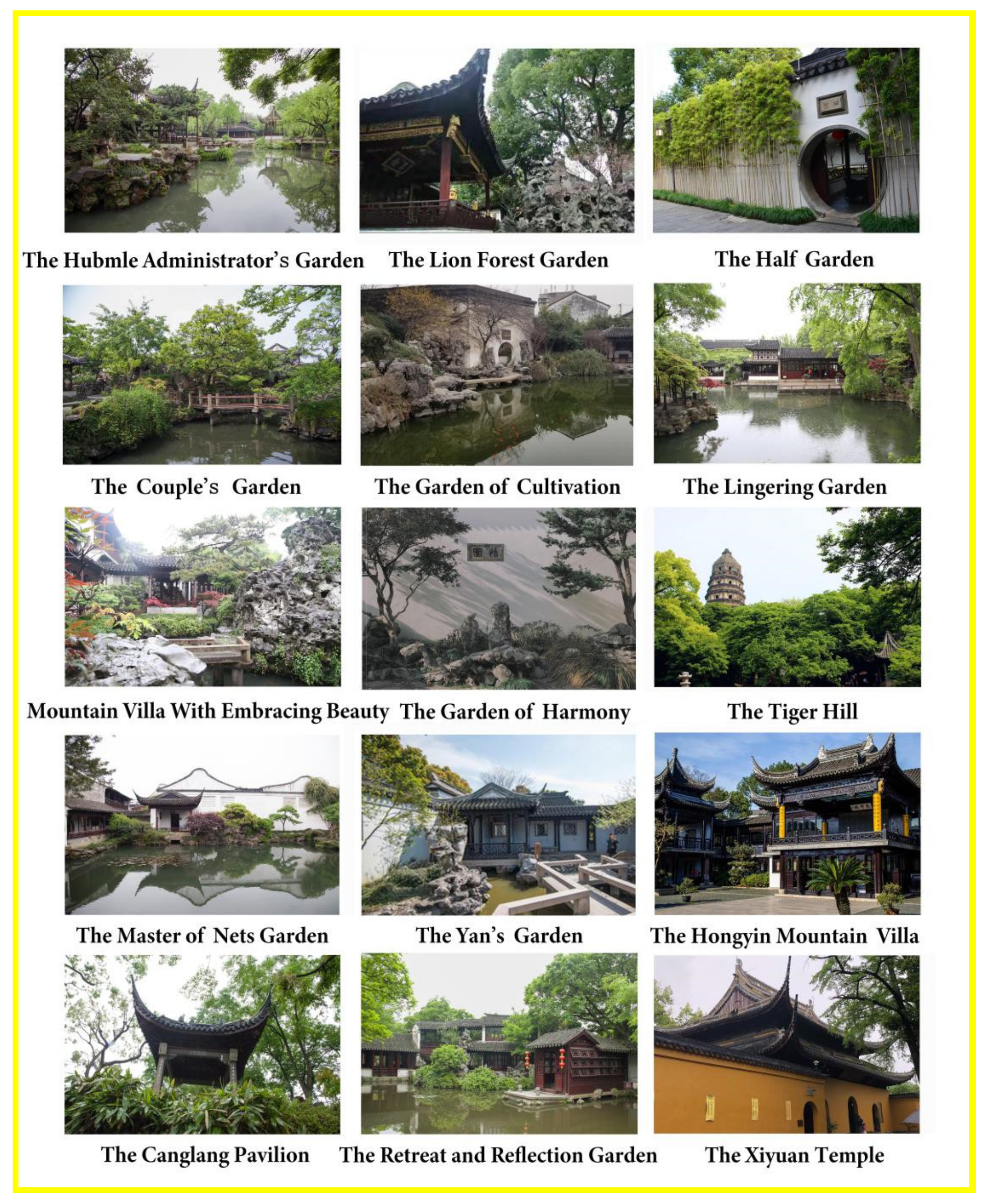


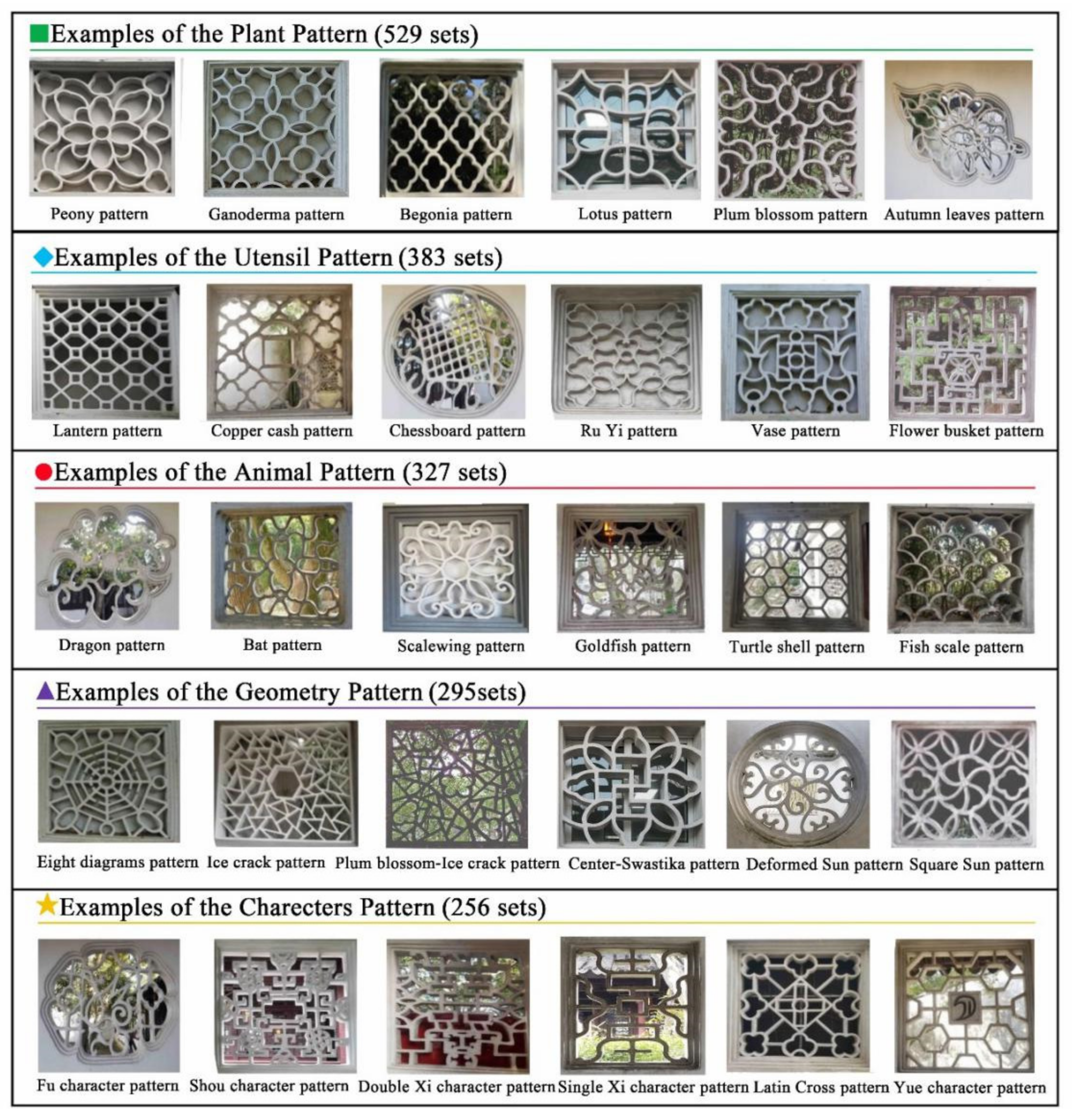
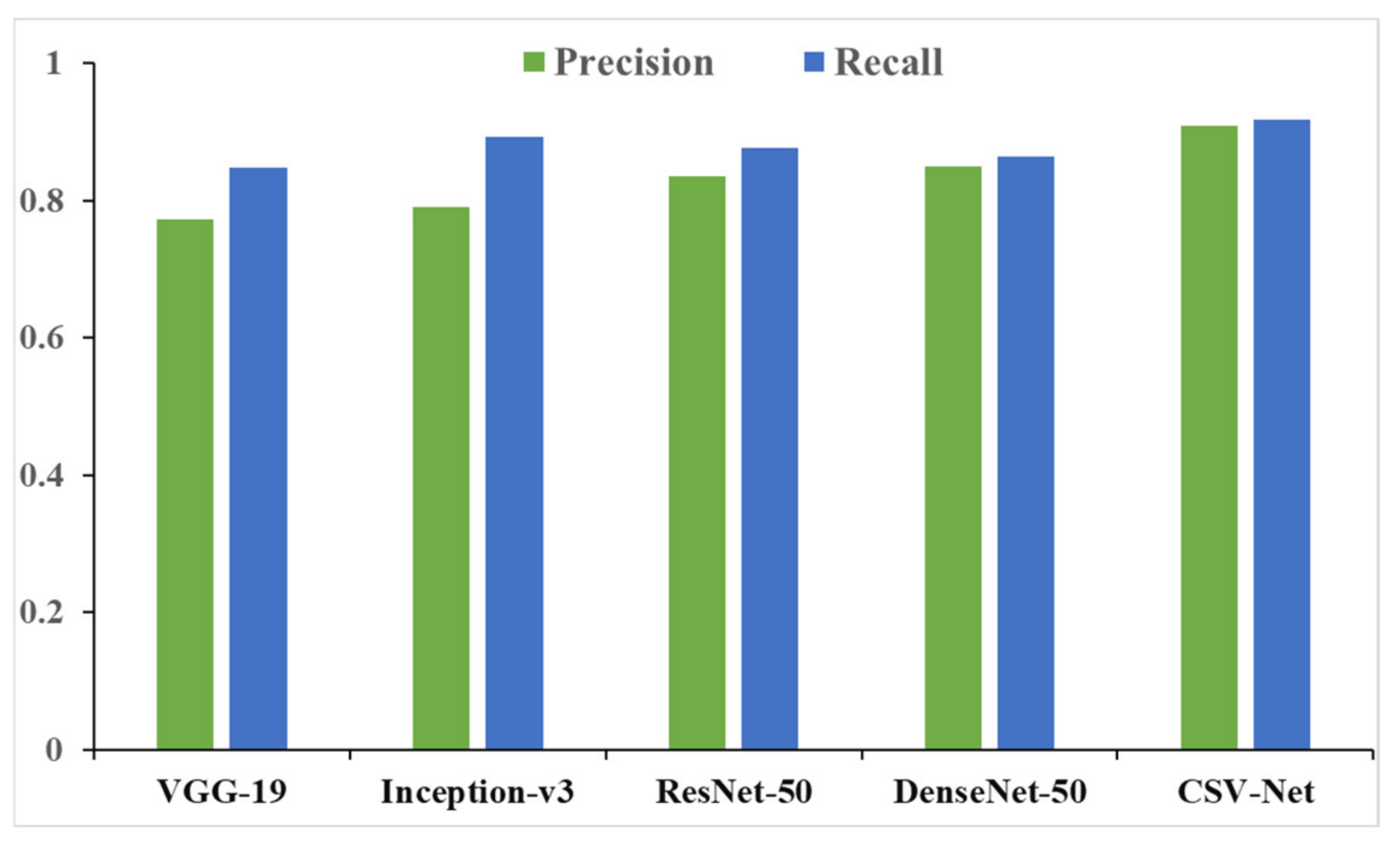


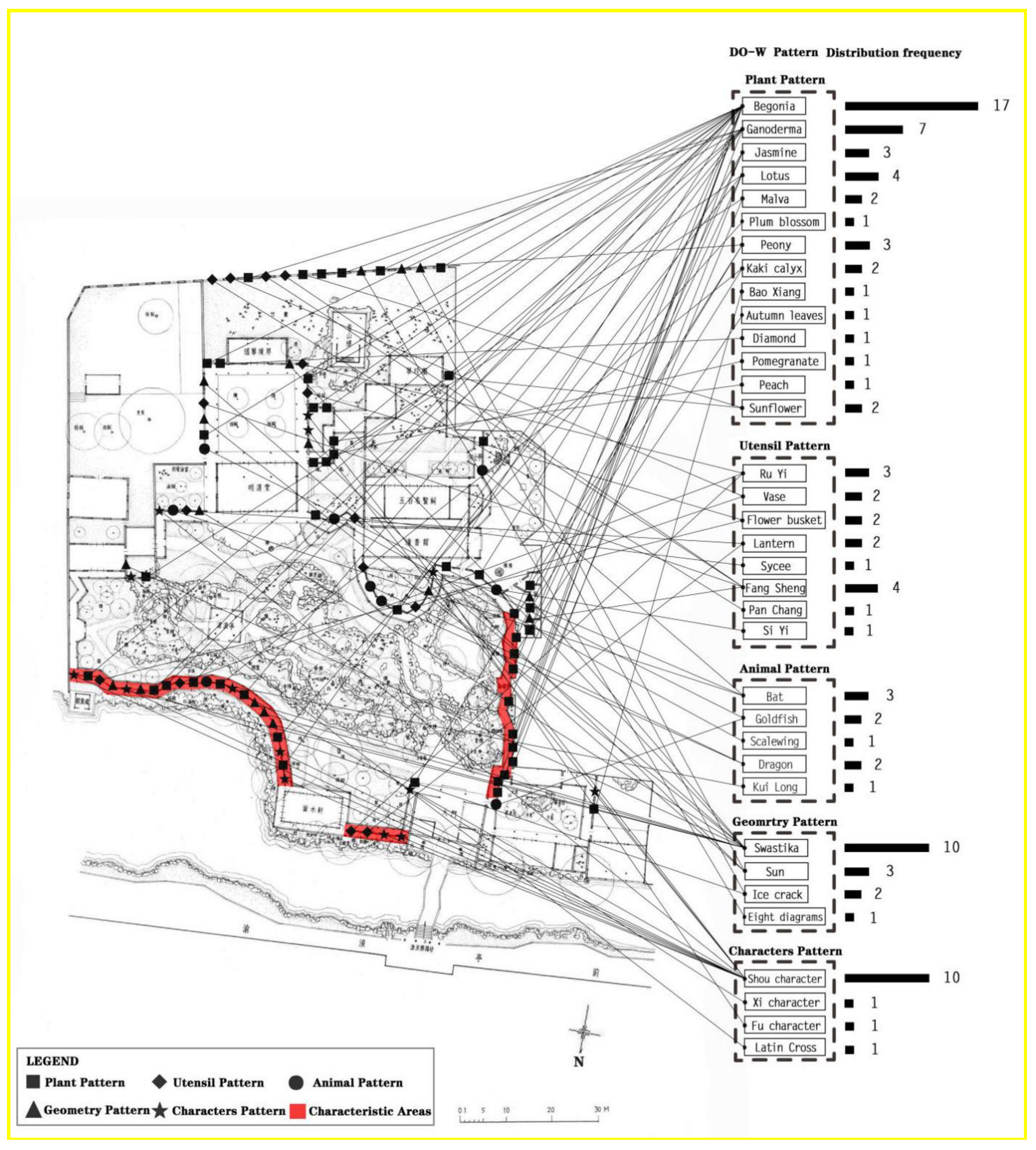
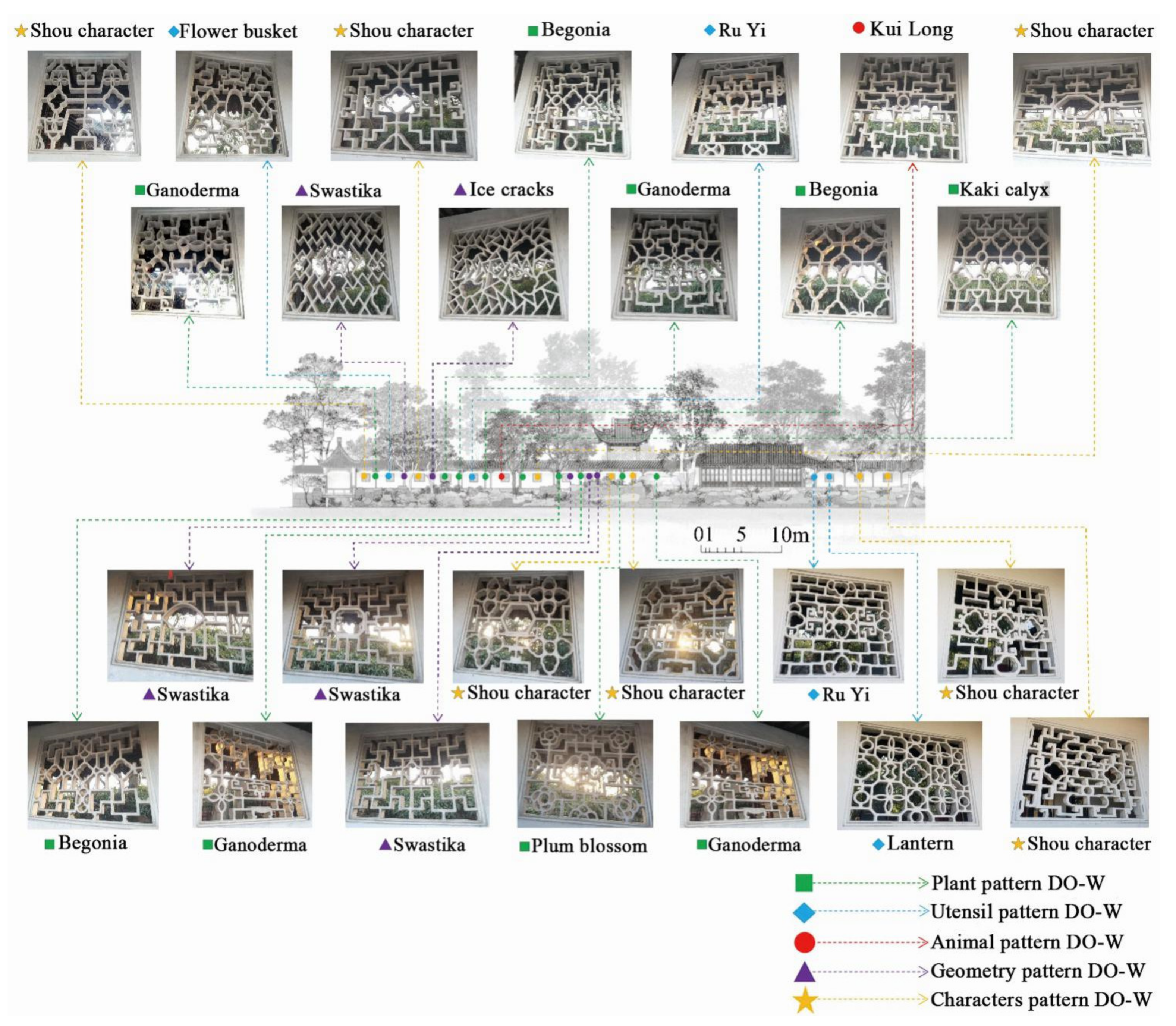

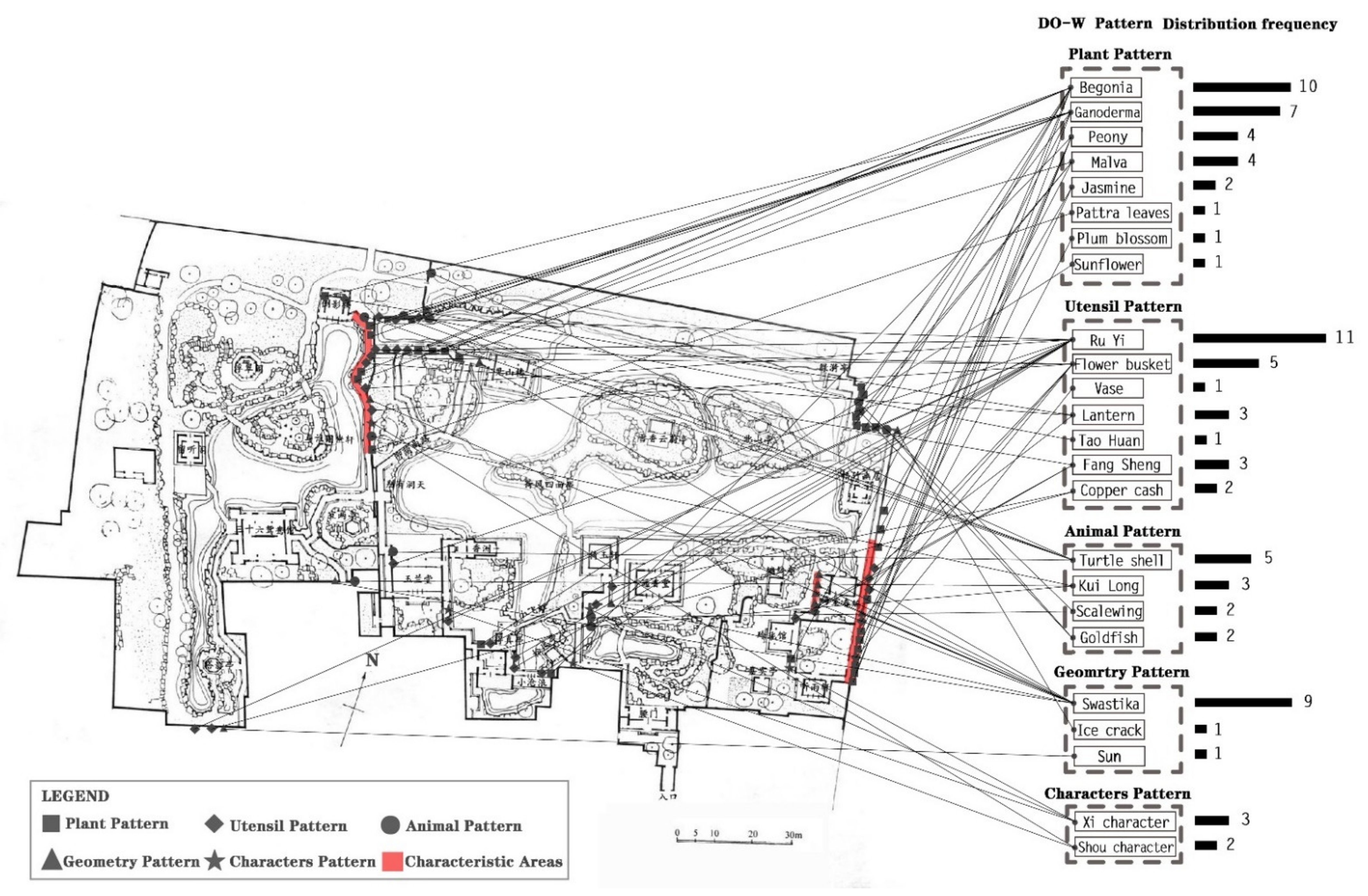


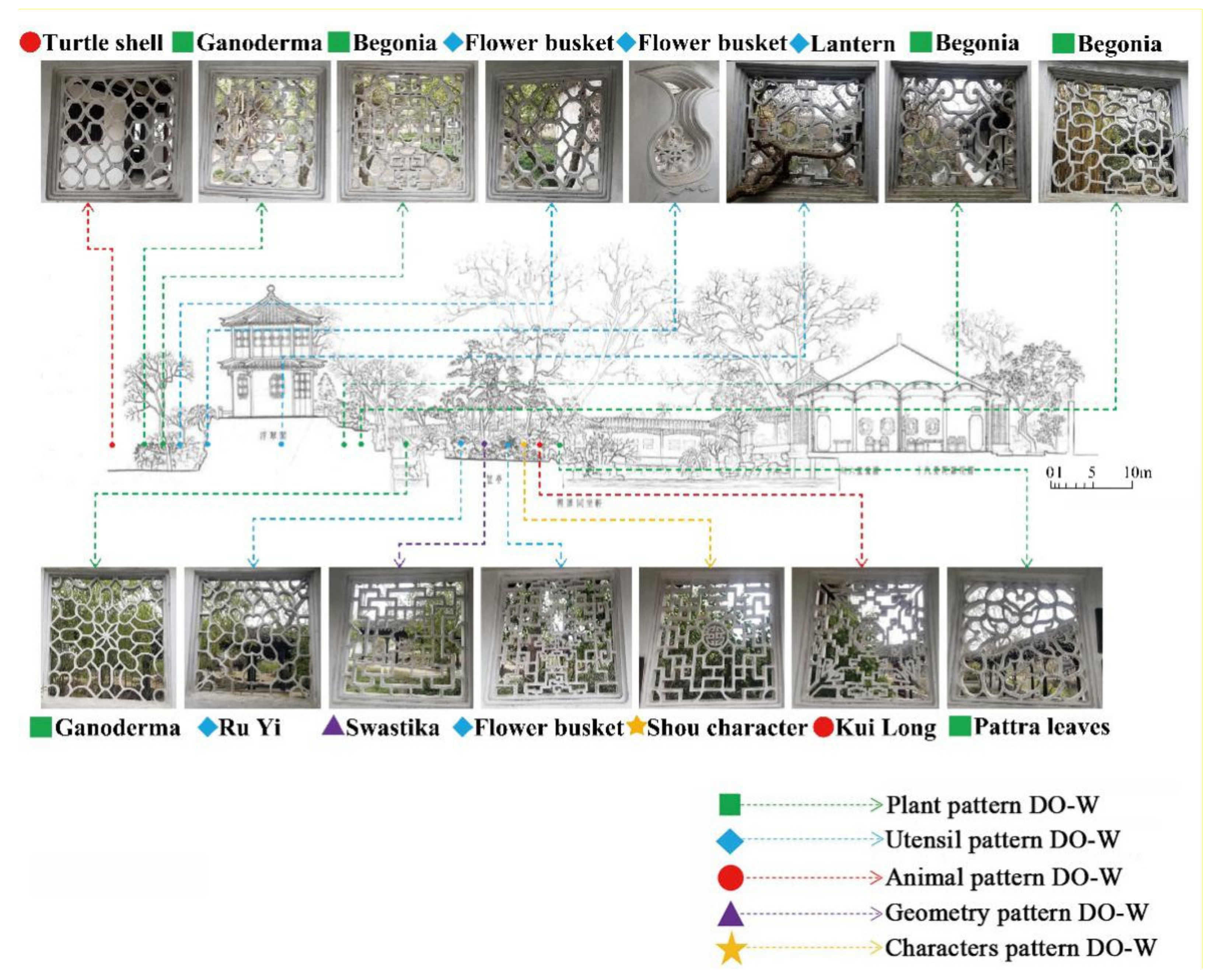
| Themes of DO-Ws | The Name of Garden and Percentage of Main Types of DO-Ws | |
|---|---|---|
| Plant patterns accounted for the largest proportion | Utensil patterns followed | The Humble Administrator’s Garden: Plant Patterns (35%), Utensil Patterns (27%) The Mountain Villa with Embracing Beauty: Plant Patterns (39%), Utensil Patterns (30%) The Garden of Cultivation: Plant Patterns (56%), Utensil Patterns (31%) The Xiyuan Temple: Plant Patterns (49%), Utensil Patterns (24%) The Garden of Harmony: Plant Patterns (37%), Utensil Patterns (24%) |
| Animal patterns followed | The Lingering Garden: Plant Patterns (52%), Animal Patterns (15%) | |
| Geometry patterns followed | The Lion Forest Garden: Plant Patterns (33%), Geometry Patterns (23%) The Canglang Pavilion: Plant Patterns (47%), Geometry Patterns (15%) The Tiger Hill: Plant Patterns (45%), Geometry Patterns (18%) The Yan’s Garden: Plant Patterns (34%), Geometry Patterns (29%) | |
| Utensil patterns accounted for the largest proportion | Geometry patterns followed | The couple’s Garden: Utensil Patterns (38%), Geometry Patterns (26%) |
| Plant patterns followed | The Hongyin Mountain Villa: Utensil Patterns (42%), Plant Patterns (39%) | |
| Geometry patterns accounted for the largest proportion, followed by plant patterns | The Master of the Nets Garden: Geometry Patterns (33%), Plant Patterns (25%) | |
| Character patterns accounted for the largest proportion, followed by plant patterns | The Retreat and Reflection Garden: Character Patterns (32%), Plant Patterns (24%) | |
Publisher’s Note: MDPI stays neutral with regard to jurisdictional claims in published maps and institutional affiliations. |
© 2021 by the authors. Licensee MDPI, Basel, Switzerland. This article is an open access article distributed under the terms and conditions of the Creative Commons Attribution (CC BY) license (https://creativecommons.org/licenses/by/4.0/).
Share and Cite
Zhang, R.; Zhao, Y.; Kong, J.; Cheng, C.; Liu, X.; Zhang, C. Intelligent Recognition Method of Decorative Openwork Windows with Sustainable Application for Suzhou Traditional Private Gardens in China. Sustainability 2021, 13, 8439. https://doi.org/10.3390/su13158439
Zhang R, Zhao Y, Kong J, Cheng C, Liu X, Zhang C. Intelligent Recognition Method of Decorative Openwork Windows with Sustainable Application for Suzhou Traditional Private Gardens in China. Sustainability. 2021; 13(15):8439. https://doi.org/10.3390/su13158439
Chicago/Turabian StyleZhang, Rui, Yuwei Zhao, Jianlei Kong, Chen Cheng, Xinyan Liu, and Chang Zhang. 2021. "Intelligent Recognition Method of Decorative Openwork Windows with Sustainable Application for Suzhou Traditional Private Gardens in China" Sustainability 13, no. 15: 8439. https://doi.org/10.3390/su13158439
APA StyleZhang, R., Zhao, Y., Kong, J., Cheng, C., Liu, X., & Zhang, C. (2021). Intelligent Recognition Method of Decorative Openwork Windows with Sustainable Application for Suzhou Traditional Private Gardens in China. Sustainability, 13(15), 8439. https://doi.org/10.3390/su13158439






